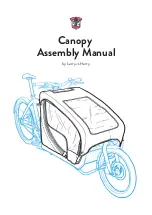
ENGLISH
OWNER’S MANUAL 2021
| ROAD BIKE
| 88
b
c
a
TESTS AFTER AN ACCIDENT
1. Check whether the wheels are still firmly fixed in the drop-outs
(a)
and
whether the rims are still centred with respect to the frame or fork. Spin the
wheels and observe the gap either between brake pads and rim sides
(b)
or between frame and tyre. If you have rim brakes and the width of the gap
changes markedly and you have no way to true the rim where you are, you
need to open the brakes a little with the special device so that the rim can run
between the brake pads without touching them. Please note that in this case
the brakes may not act as powerfully as you are used to.
No matter whether you have rim or disc brakes, have the wheels trued by
your SCOTT dealer immediately after you are back home.
For more information see the chapters “Brakes”, “Using quick-releases and
thru axles” and “Wheels and tyres” and the manuals of the component manu-
facturers.
2. Check that handlebars and stem are neither twisted nor bent or broken and
that they are level and aligned. Make sure the stem is firmly fixed on the fork
by trying to turn the handlebars relative to the front wheel
(c)
. Briefly lean on
the brake levers to make sure the handlebars are firmly fixed in the stem.
Realign the components, if necessary, and gently tighten the bolts to ensure
a reliable clamping of the components
(d)
. The maximum torque values are
printed directly on the components or specified in the manuals of the compo-
nent manufacturers.
For more information see the chapters “Adjusting the SCOTT bike to the rid-
er” and “The headset on the SCOTT bike” and the manuals of the component
manufacturers.
3. Check whether the chain still runs on the chainrings and the sprockets. If your
SCOTT bike fell over to the chain side, verify the proper functioning of the
gears. Ask somebody to lift your SCOTT bike by the saddle and carefully shift
through all the gears.
















































